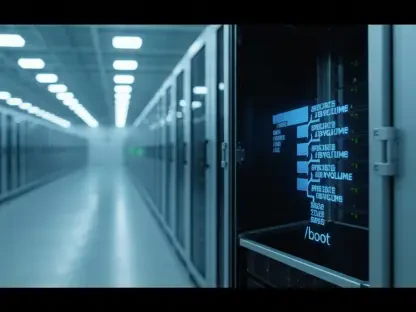As cloud computing continues to dominate the IT landscape, the imperative task of safeguarding these environments against evolving threats becomes ever more pressing. The Cloud Security Alliance (CSA) has provided an in-depth report examining the major security concerns that organizations face today, and it is clear that the cloud security landscape is complex. A primary concern over the past two years has been misconfiguration and insufficient change control, issues that have continually plagued many organizations. These vulnerabilities often lead not only to potential breaches but also reveal recurring lapses that are frequently exploited by malicious entities. The implications of such breaches underscore the critical necessity of maintaining stringent controls and protocols within cloud environments.
The CSA’s research highlights that robust identity and access management is of paramount importance, emerging as the second significant concern. Organizations must prioritize implementing strong security measures such as multifactor authentication and enforcing least-privilege access control mechanisms. These measures are vital in preventing unauthorized lateral movements within cloud infrastructures and mitigating privilege escalation threats. The effective execution of these strategies ensures that unauthorized users cannot exploit vulnerabilities or wreak havoc within an organization’s cloud-deployed resources. Moreover, there is a pressing need for a shared responsibility model, wherein cloud users and providers collaboratively secure end-user environments. This collaboration includes enforcing secure defaults and remaining vigilant in detecting and responding to potential abuses, which can prevent broader security incidents.
The Role of Continuous Monitoring
Among the key strategies for bolstering cloud security is the implementation of continuous monitoring combined with real-time detection capabilities. These practices are pivotal to swiftly identifying unauthorized activities, employing automated monitoring tools to minimize the potential for breaches. Anomaly detection systems play a crucial role in alerting organizations to irregular activities that could signify an emerging threat. This vigilant approach ensures that breaches can be intercepted and contained swiftly before substantial damage occurs. Given the complexities and dynamic nature of cloud environments, organizations must be proactive in establishing these monitoring systems as part of their comprehensive security framework.
A strong emphasis is placed on securing the supply chain, as attackers frequently exploit vulnerabilities in third-party integrations and open-source components. Organizations must ensure that their supply chains are fortified against such intrusions, conducting thorough assessments of third-party technologies and maintaining vigilant oversight of their cloud deployments. Regular configuration reviews and ensuring compliance with regulations such as GDPR and HIPAA are essential for addressing long-term security concerns. These practices not only mitigate the risk of data breaches but also reassure stakeholders about the safety and integrity of the organization’s cloud environments, facilitating trust and resilience.
Proactive Governance and Testing
Effective governance forms the backbone of sustainable cloud security practices. The CSA emphasizes the need for organizations to adopt proactive governance models that prioritize security at every layer of their operations. By regularly reviewing configuration settings and conducting audits, organizations can ensure adherence to set compliance standards and safeguard against potential vulnerabilities. Moreover, cloud-specific incident response and recovery plans are crucial, accounting for the inherent complexities associated with cloud infrastructures. Traditional security methodologies often fall short; thus, tailored strategies are needed to address the distinct challenges posed by cloud environments.
Security testing and validation procedures must extend beyond live environments to include development and testing phases. Vulnerabilities often manifest during development, where controls may not be as stringent. By integrating comprehensive security assessments throughout the software development lifecycle, organizations can prevent security lapses from reaching production stages. The CSA advocates for such thorough evaluation processes, recognizing that maintaining a strong security posture involves continuous improvement and adaptation. Organizations that embrace these practices can more effectively anticipate and mitigate potential breaches, maintaining an overall stronger security posture in their cloud operations.
Fortifying Future Cloud Security
As cloud computing firmly establishes itself in the IT landscape, it’s crucial to protect these systems against ever-evolving threats. The Cloud Security Alliance (CSA) has released a comprehensive report detailing the principal security concerns faced by organizations today. It highlights that cloud security is intricate, with misconfigurations and inadequate change control being pressing issues over the past two years. These vulnerabilities not only invite potential breaches but also demonstrate recurring flaws exploited by harmful actors, underscoring the necessity for stringent controls in cloud setups.
The CSA’s study also emphasizes identity and access management as a top concern, advocating for strong security measures like multifactor authentication and least-privilege access controls. Such strategies are vital to prevent unauthorized access and curb privilege escalation within cloud environments. Implementing these measures ensures security resilience against exploitation. Furthermore, a shared responsibility model between cloud users and providers is essential, fostering cooperation in securing user environments, enforcing defaults, and staying vigilant to prevent broader incidents.









